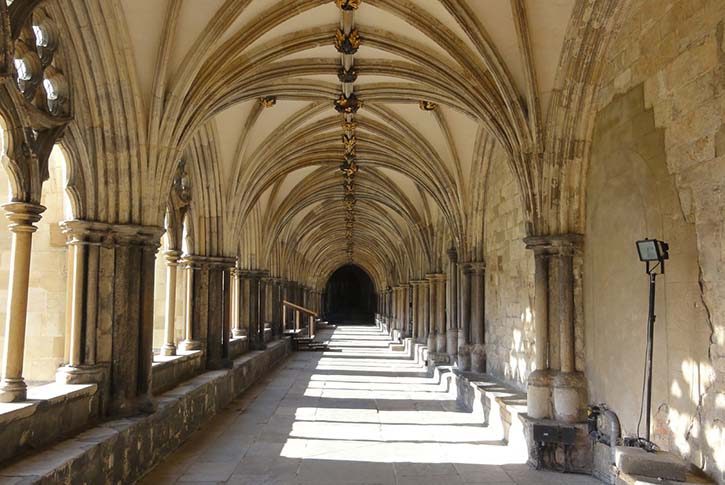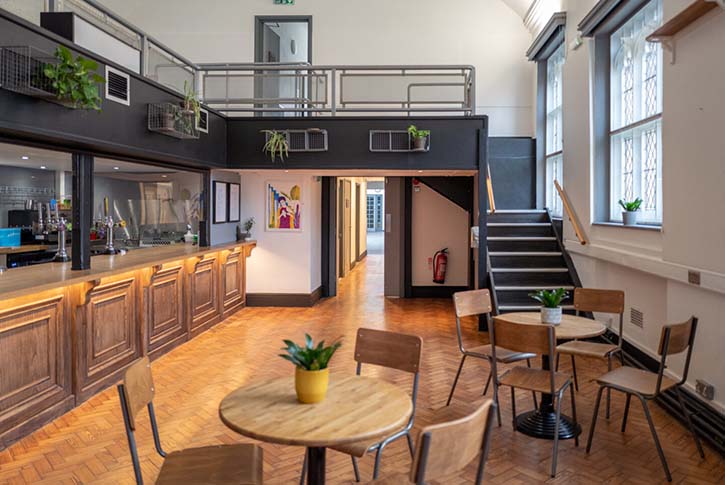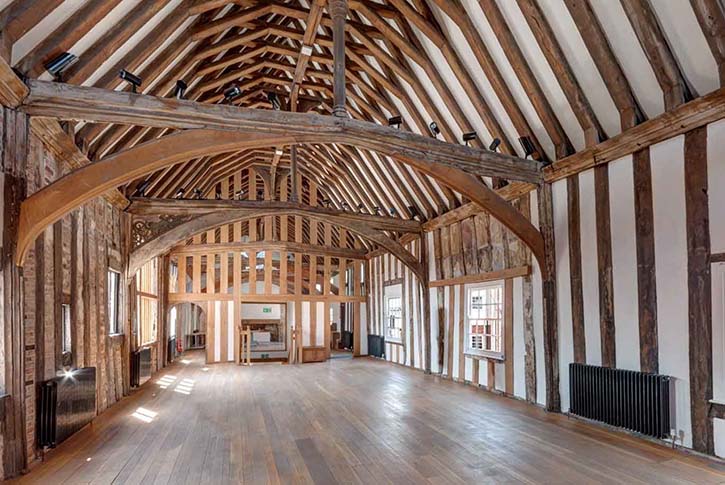Norwich’s Art and Architecture: A Cultural Exploration
- by Filip

This charming city is a hidden treasure for art and architecture enthusiasts, and I’m excited to take you on a journey that promises to be both visually stunning and historically enriching. Join me as we dive deeper into Norwich’s art and architecture, exploring each site’s unique charm, practical tips.
Norwich Cathedral: A Spiritual Masterpiece
My cultural exploration begins at the magnificent Norwich Cathedral, a stunning spiritual masterpiece of great historical significance. Its stunning Romanesque architecture and towering spire make it one of the most iconic landmarks in the city.
I visited the cathedral on a crisp morning, and as I walked through its intricately designed cloisters, I felt like I had stepped back in time. The vaulted ceilings and medieval stone carvings told stories of the city’s rich history. The cathedral offers guided tours that provide fascinating insights into its construction and the lives of the people who built it.
For those planning a visit, the entrance fee is £12 for adults, and the cathedral is open from 7:30 AM to 5:30 PM daily. I recommend checking the schedule for any special events or choir performances during your visit, as they add a unique layer of charm to the experience.
Elm Hill: A Step Back in Time
Next stop I headed to Elm Hill, a quaint and picturesque street that felt like a step back in time. With its cobblestone pathways, timber-framed buildings, and charming shops, Elm Hill is a delightful stroll through history.
I meandered through this historic street, admiring the medieval architecture and the unique shops that line its path. From antique stores to cozy tearooms, there’s something for everyone here. The street is free to explore, and you can easily spend an hour or two discovering its hidden treasures.
Elm Hill is a perfect place for a leisurely walk and some souvenir shopping. Be sure to check the opening hours of the individual shops, as they may vary. Additionally, consider visiting the nearby Strangers’ Hall, a museum that offers a deeper look into the history of the area.
The Plantation Garden: A Hidden Oasis
Hidden away in the heart of Norwich is the Plantation Garden, a true hidden oasis that often goes unnoticed by tourists. This lovingly restored Victorian garden is a peaceful retreat from the bustling city.
As I wandered through the garden, I was struck by the beauty of its meticulously designed pathways, terraces, and vibrant flowerbeds. The garden’s gothic-style fountain and ornate wrought-iron gates added a touch of whimsy and elegance.
The entrance fee for the Plantation Garden is a modest £2, making it a budget-friendly attraction. The garden is typically open from April to October, so if you’re visiting in November, be sure to check for any special openings or events.
The Strangers’ Hall: A Glimpse into the Past
Stranger’s Hall is a historic house museum that gives you a glimpse into the lives of the people who once lived there. The museum’s interiors are a fascinating blend of Tudor, Stuart, Georgian, and Victorian styles.
I was particularly intrigued by the intricate details of the rooms, each one a time capsule from a different era. From ornate tapestries to antique furniture, the museum captures the essence of each period. The knowledgeable staff offers guided tours that shed light on the history and significance of the house.
The entrance fee for the Strangers’ Hall is £5 for adults, and it’s open from Tuesday to Saturday from 10 AM to 4 PM. The museum’s location in the heart of the city makes it easily accessible, and it’s a must-visit for history enthusiasts.
The Norwich Arts Centre: A Hub of Creativity

My cultural exploration continued with a visit to Norwich Arts Centre, a thriving center for creativity and artistic expression. Nestled within the historic St. Swithin’s Church, this venue offers a diverse range of performances, exhibitions, and events that cater to all artistic tastes.
I had the pleasure of attending a live music performance during my visit. The acoustics in the church were truly exceptional, and the intimate setting allowed for a unique connection between the performers and the audience. The vibrant atmosphere and the talent on display made for an unforgettable evening.
The Norwich Arts Centre hosts a variety of events, from live music and theater performances to art exhibitions and workshops. It’s essential to check their schedule in advance to see what’s on during your visit. Ticket prices can vary, but many events are reasonably priced, making it accessible to a wide range of audiences.
I attended a folk music performance at the Norwich Arts Centre, and the experience was fantastic. I was able to get up close to the stage, which created an intimate atmosphere. The performance lasted for about two hours, and I spent an additional hour exploring the art exhibitions in the center. It’s essential to book your tickets in advance, especially for popular events, and arrive a bit early to secure a good spot.
The Bridewell Museum: History Preserved
My next stop takes us to the Bridewell Museum, a place where history is brought to life. Housed in a beautifully preserved medieval building, the museum offers a fascinating glimpse into the history of Norwich and its people.
My visit to the Bridewell Museum was a journey through time. The museum’s interactive exhibits and carefully curated displays provide a comprehensive overview of the city’s history, from its industrial past to its cultural heritage. The highlight for me was exploring the recreated Victorian and Edwardian rooms, which made history feel incredibly tangible.
The entrance fee for the Bridewell Museum is affordable, typically around £5 for adults, and it’s well worth the price. The museum is open from 10 AM to 4 PM, Tuesday to Saturday, making it easy to fit into your cultural exploration of Norwich.
I spent about two hours at the Bridewell Museum, immersing myself in the rich history of Norwich. The recreated rooms were a particular delight, as they allowed me to step back in time and experience life in different eras. The museum is ideal for history enthusiasts and families, and I recommend taking your time to absorb the wealth of information on display.
The Norwich University of the Arts: Emerging Talents
My last cultural destination in Norwich was Norwich University of the Arts (NUA), a place where emerging talent and creativity thrive. This vibrant institution is known for its commitment to nurturing young artists and designers.
During my visit to NUA, I explored the university’s gallery, where a rotating collection of student and alumni artwork is on display. The sheer talent and diversity of styles were truly impressive. It was evident that NUA plays a pivotal role in shaping the future of art and design.
The gallery is open to the public, and admission is free. It’s an excellent opportunity to support emerging artists and get a glimpse of the next generation of creative talent.
I spent approximately an hour exploring the NUA gallery, admiring the various artworks on display. The atmosphere was relaxed, and I had the chance to engage in a conversation with some of the artists about their creative processes. It was a refreshing and inspiring experience that showcased the vibrant art scene in Norwich.
Dragon Hall: Medieval Merchants Revisited

I chose to visit Dragon Hall during one of its special events, a historical reenactment that brought the medieval period to life. The event included costumed interpreters who portrayed the lives of the hall’s original occupants, the merchants.
Wandering through the atmospheric candlelit hall, I was transported to a different era. The interpreters shared captivating stories about the merchants, their trade, and the significance of Dragon Hall in the medieval city. The event provided a vivid and immersive experience that deepened my understanding of Norwich’s history.
The historical reenactment at Dragon Hall lasted about two hours, including time for interactions and questions. It was a fantastic way to step back in time and immerse myself in the past.
Attending the historical reenactment at Dragon Hall was an exceptional experience. The candlelit ambiance and costumed interpreters made the history come alive. I spent an additional 30 minutes exploring the hall on my own, admiring its medieval architecture. If you have the opportunity to visit during a special event, I highly recommend it for a more immersive experience.
The Great Hospital: Medieval Mysteries Unveiled
My cultural exploration took us to the Great Hospital, an institution with over 750 years of history. It’s a place where you can unravel the mysteries of medieval Norwich.
During my visit, I chose to participate in one of the guided tours offered by the hospital. The tour took me through the historic halls and cloisters, revealing the fascinating stories of the people who lived and worked there. The guide provided insights into the hospital’s functions throughout the centuries, from caring for the sick to housing the elderly.
One of the highlights of the tour was a visit to the St. Helen’s Church, a beautiful medieval church adjacent to the hospital. The guide shared stories of the church’s architecture and its role in the local community.
The guided tour at the Great Hospital lasted approximately 90 minutes, and it was a captivating journey through the hospital’s history.
Exploring the Great Hospital with a guided tour was a remarkable experience. The guide’s knowledge and storytelling brought the history of the place to life. I spent an extra 20 minutes wandering through the tranquil cloisters and reflecting on the centuries of history they have witnessed. If you’re interested in medieval history, the Great Hospital is a must-visit, and the guided tour enhances the experience.
Practical Tips for Your Cultural Exploration
To make the most of your cultural exploration in Norwich, here are some practical tips to consider:
- Multisite Tickets: If you plan to visit multiple sites, inquire about multisite tickets, which often offer discounts on combined entrance fees.
- Guided Tours: Don’t hesitate to join guided tours when available. They provide valuable insights and stories that enhance your understanding of the sites.
- Photography: Many sites allow photography, but be mindful of flash photography in sensitive areas. Capture the beauty, but do so respectfully.
- Seasonal Changes: Keep in mind that opening hours and seasonal availability may vary. Check in advance for any special events or exhibitions happening during your visit.
- Local Cuisine: Norwich has a thriving food scene. Take the opportunity to explore local eateries and savor traditional and international cuisine during your cultural exploration.
Norwich’s art and architecture are a source of inspiration and wonder. The city’s rich history and the artistic beauty that adorns its streets and buildings offer a cultural journey like no other. The modest entrance fees, affordable passes, and varied opening hours make it accessible to all travelers. As you delve into the heart of Norwich, prepare to be captivated by its historical tales and the masterpieces of architecture that have stood the test of time. It’s a journey that promises to leave you with a deeper appreciation for art and history, just as it did for me.
This charming city is a hidden treasure for art and architecture enthusiasts, and I’m excited to take you on a journey that promises to be both visually stunning and historically enriching. Join me as we dive deeper into Norwich’s art and architecture, exploring each site’s unique charm, practical tips. Norwich Cathedral: A Spiritual Masterpiece My…
Recent Posts
- Darwin’s Seafood Feast: An Epicurean Trail Through the Top Sea-to-Plate Restaurants
- Tropical Natural Wonders: Exploring the National Parks Around Darwin
- Darwin Harbour Odyssey: Where History, Scenery, and Vessels Converge
- Flying from Cairns to Darwin: Flight Time, Cost, and Booking Tips
- Cairns Family-Friendly Hotel: A Perfect Stay for the Whole Family